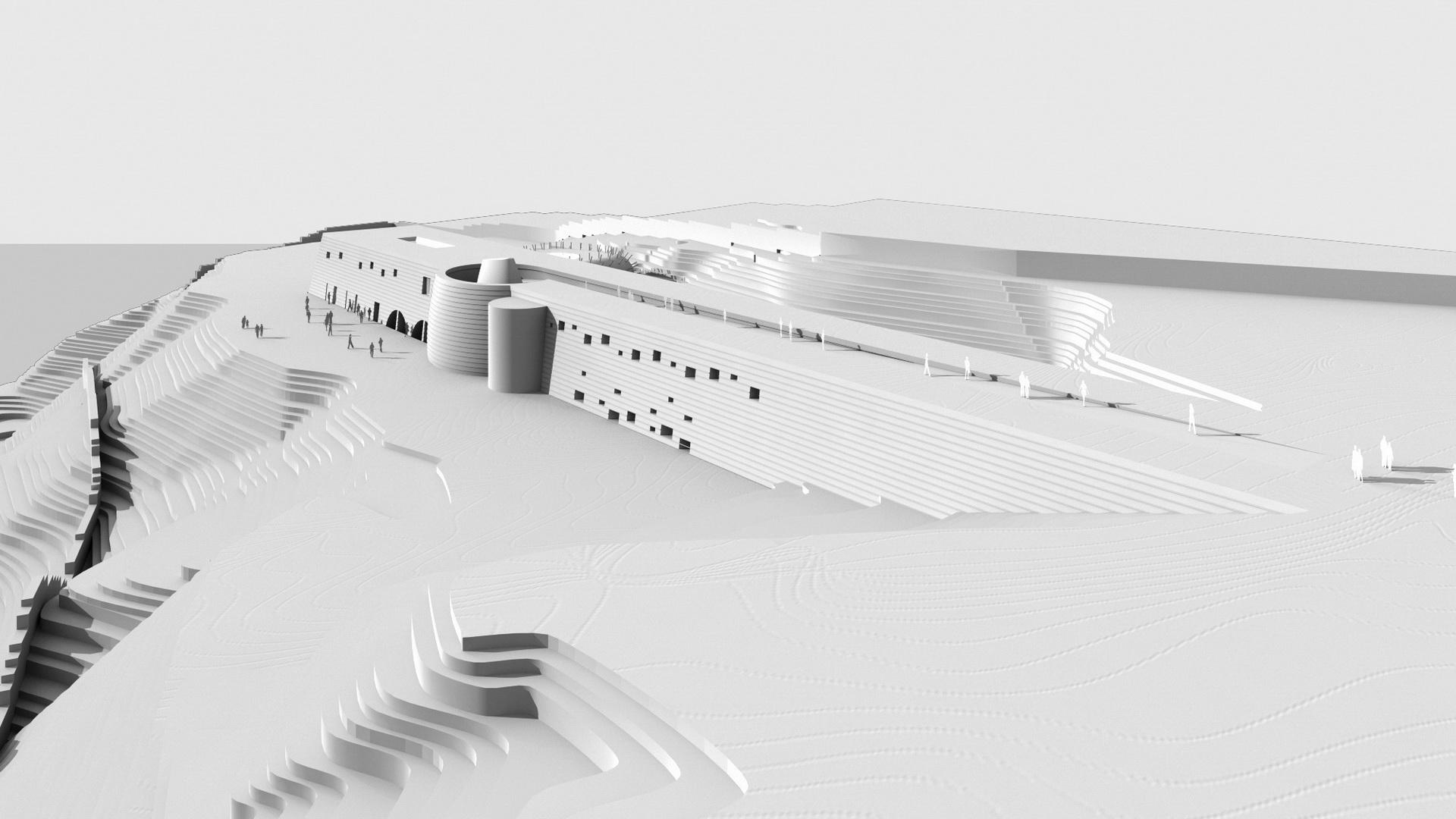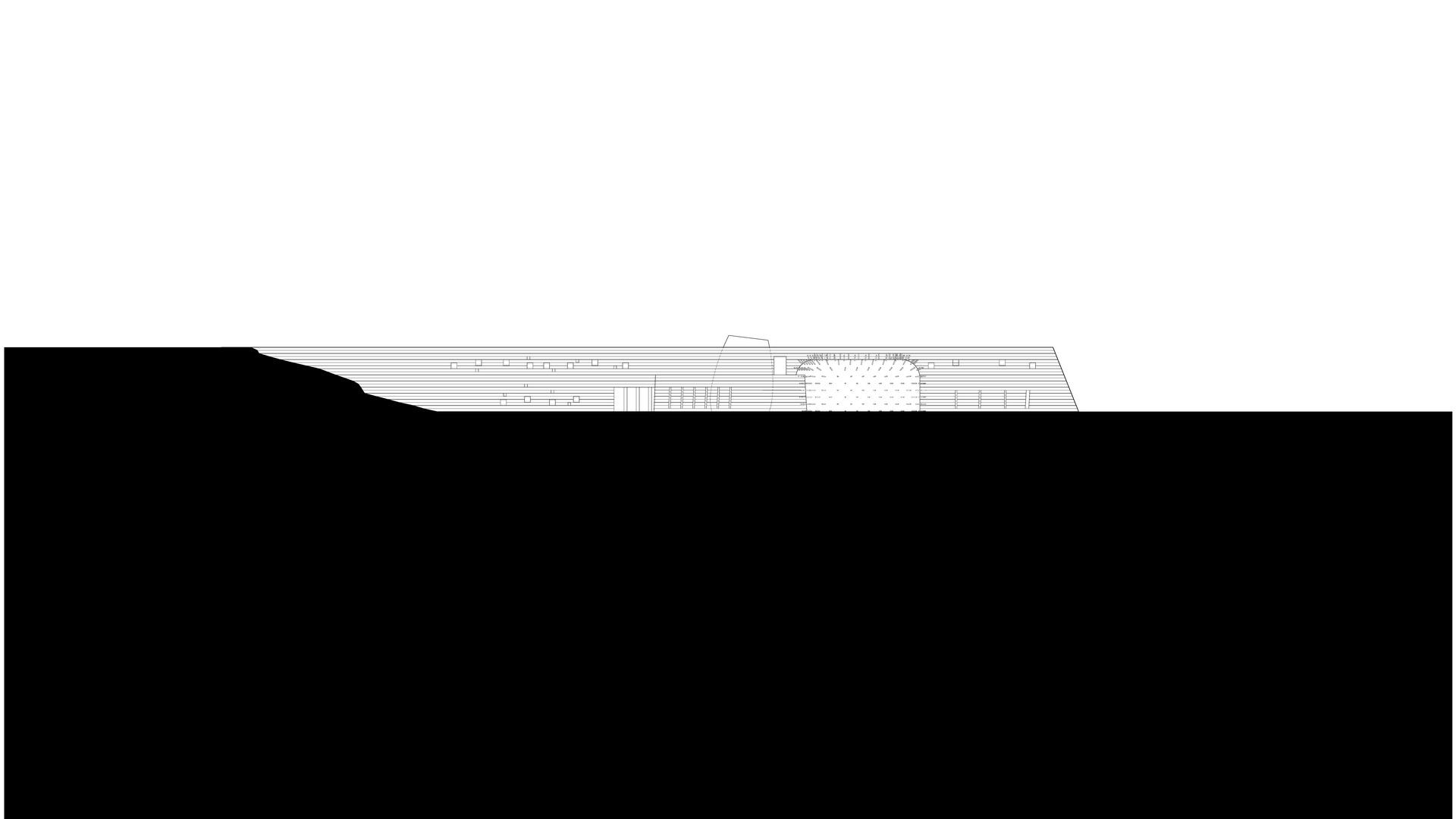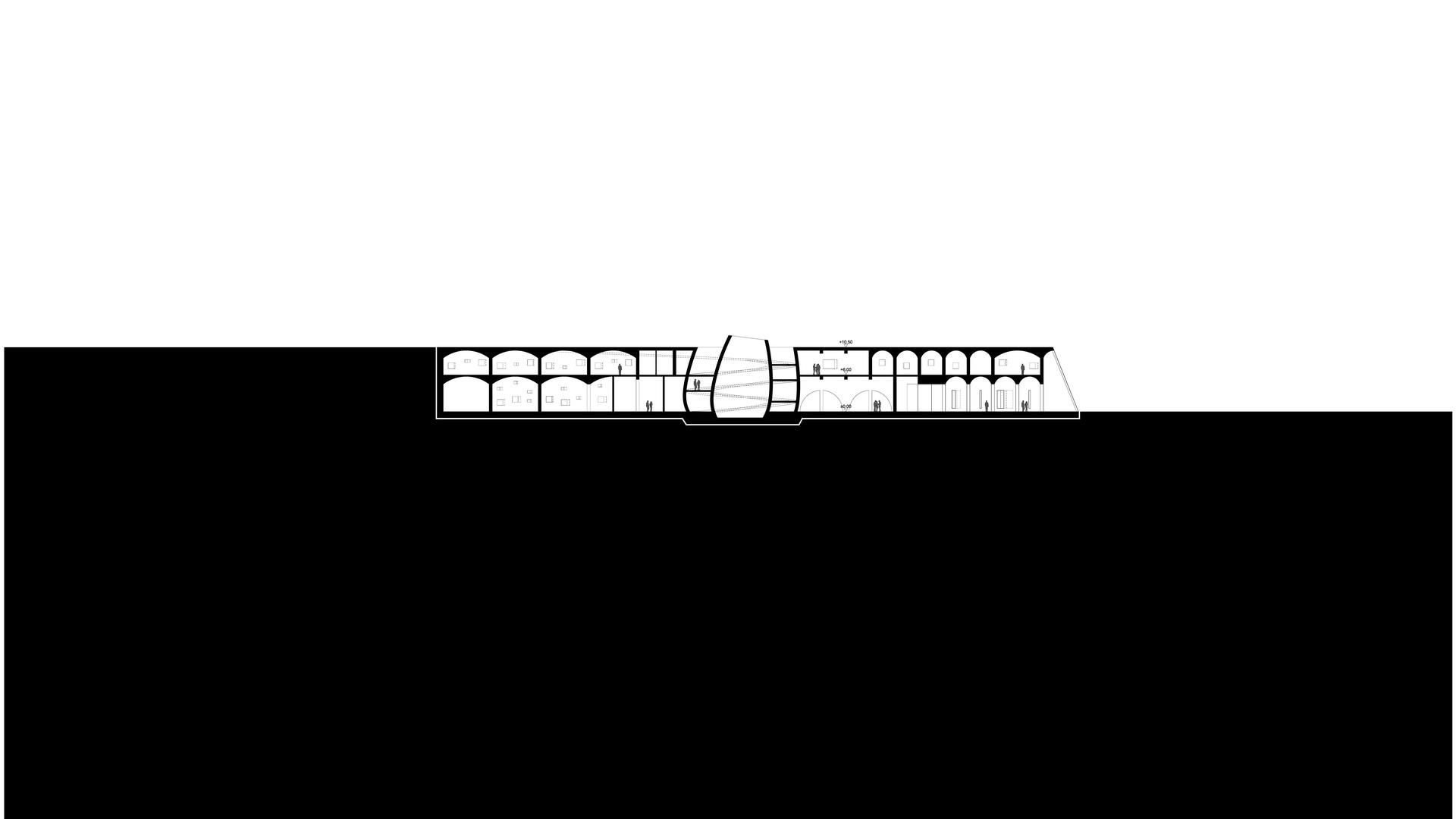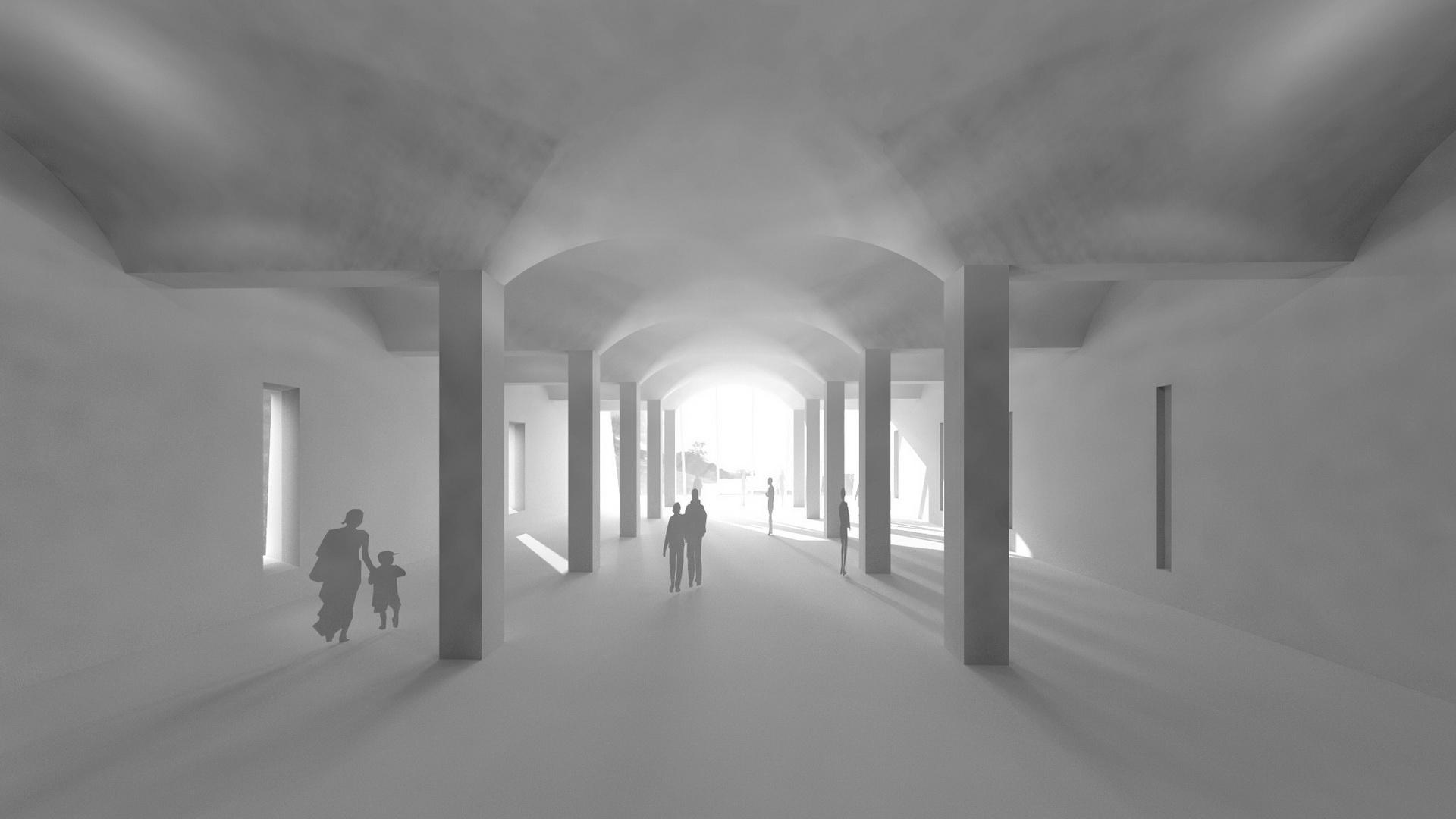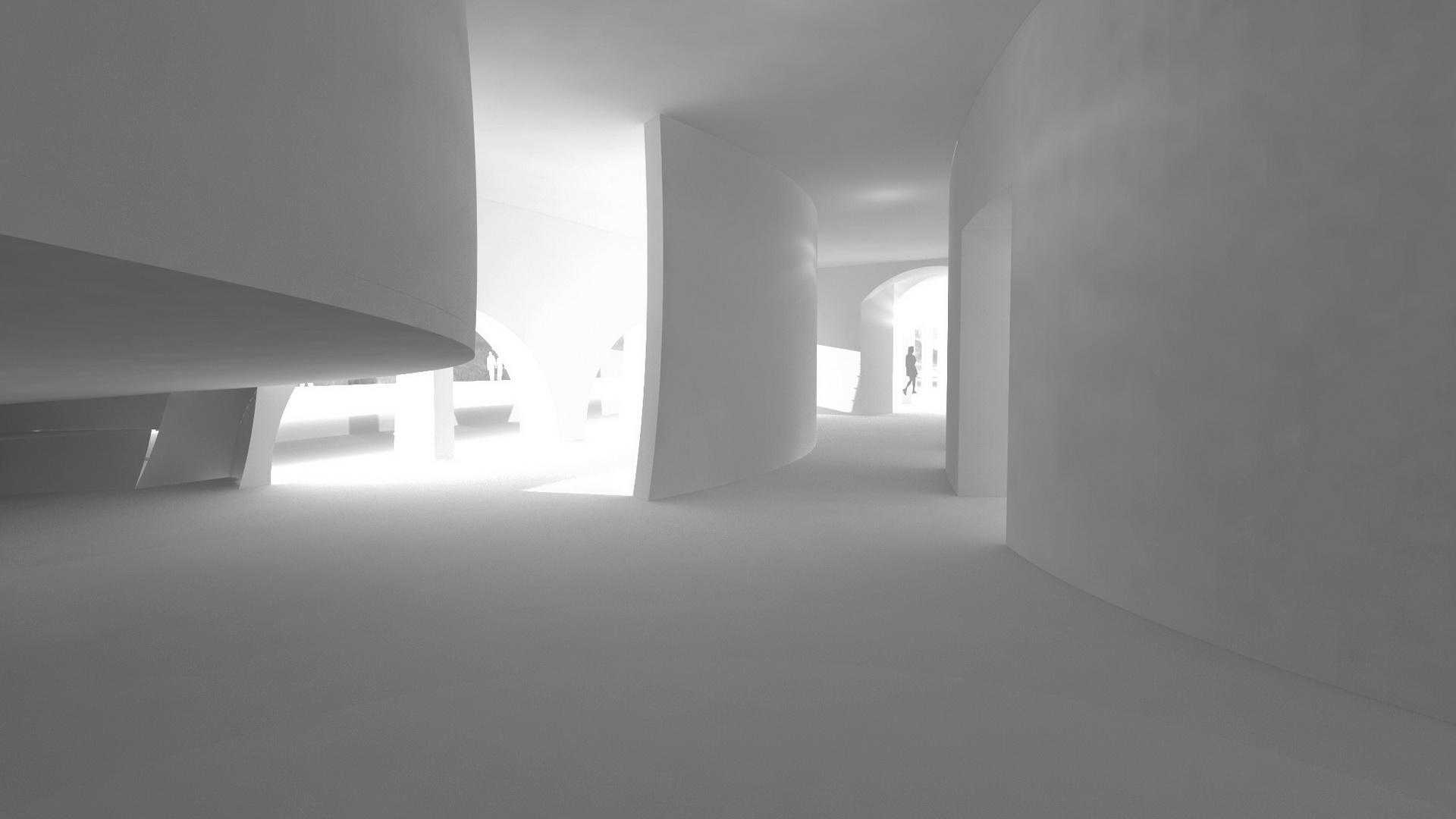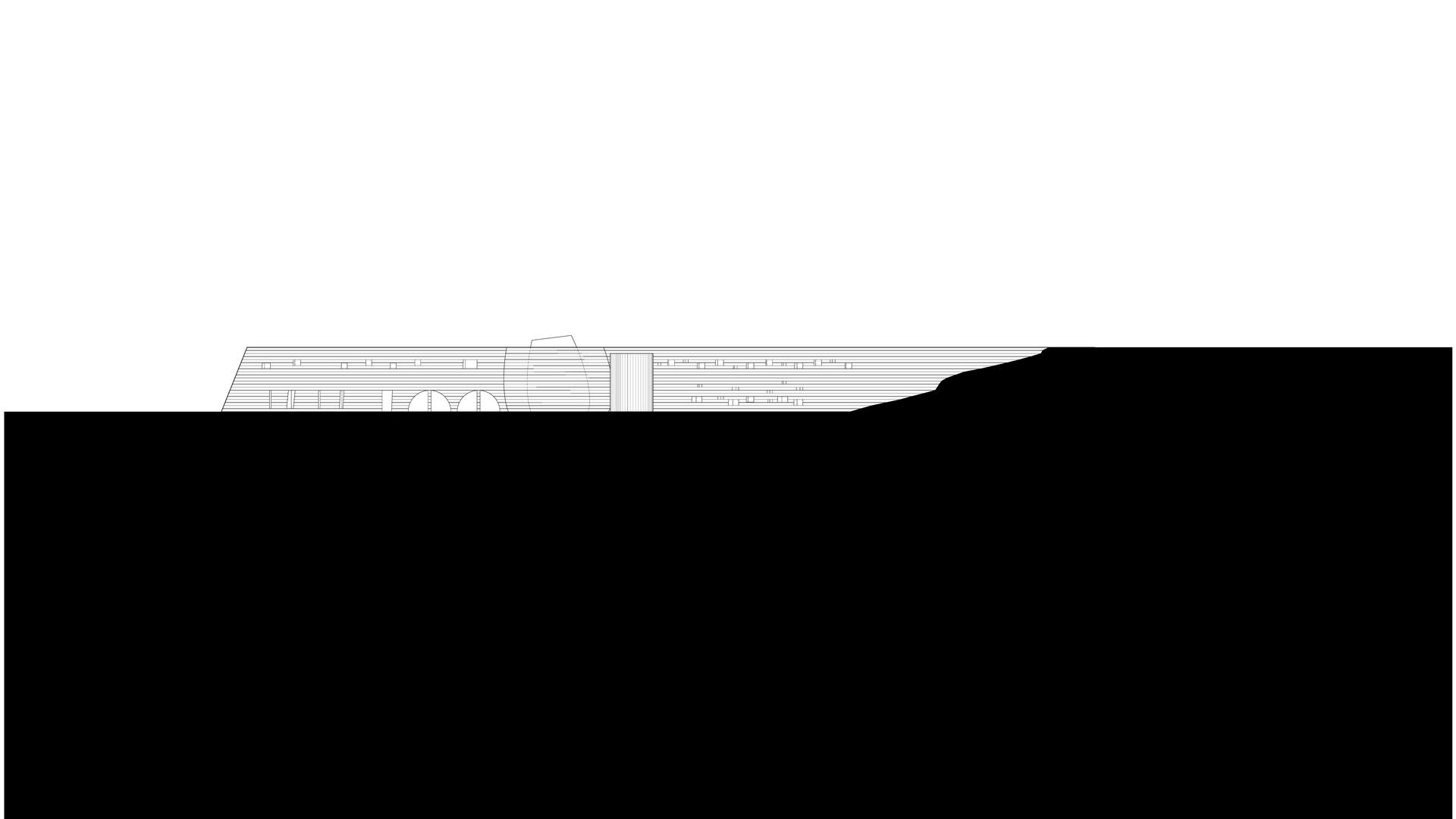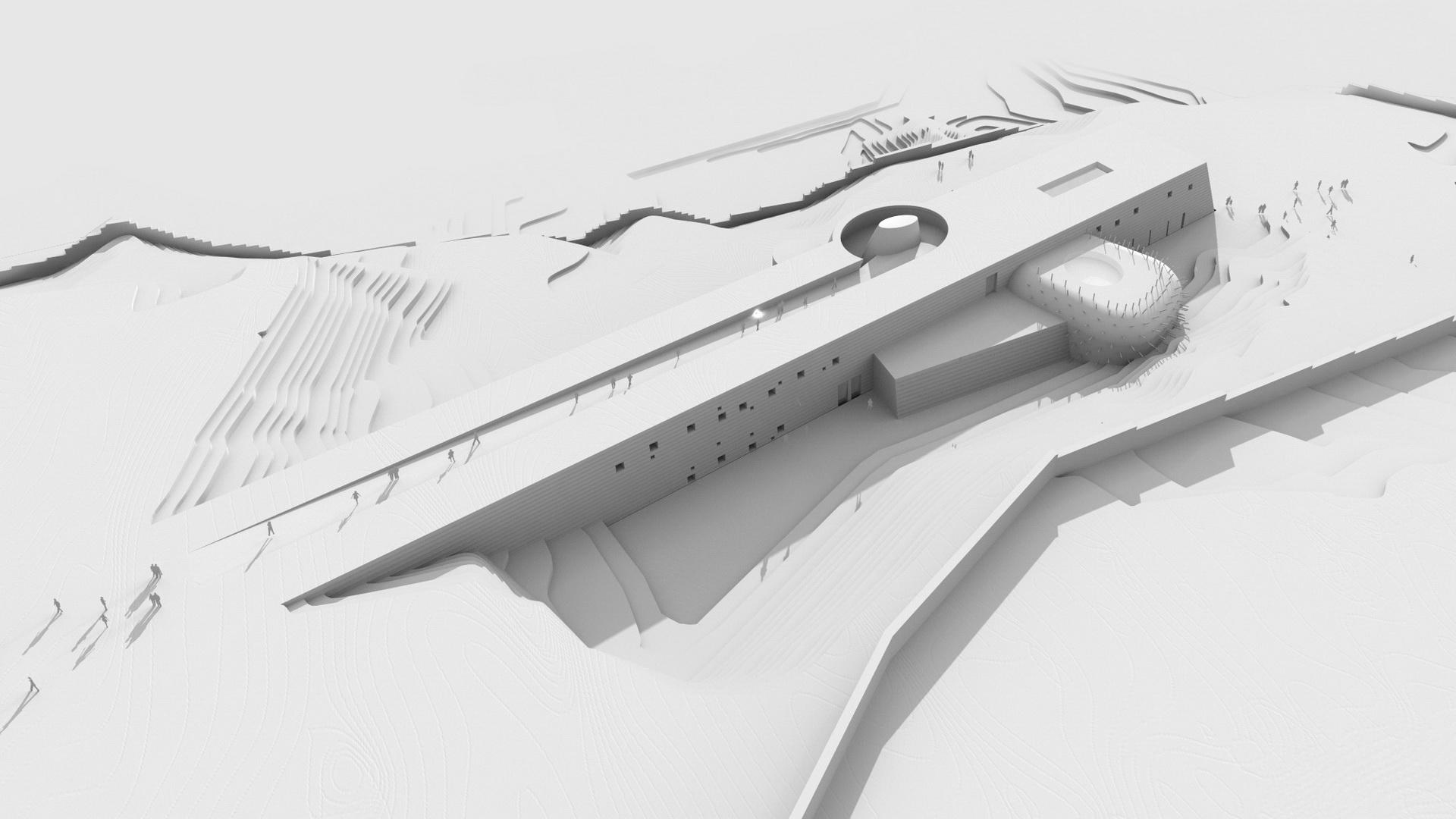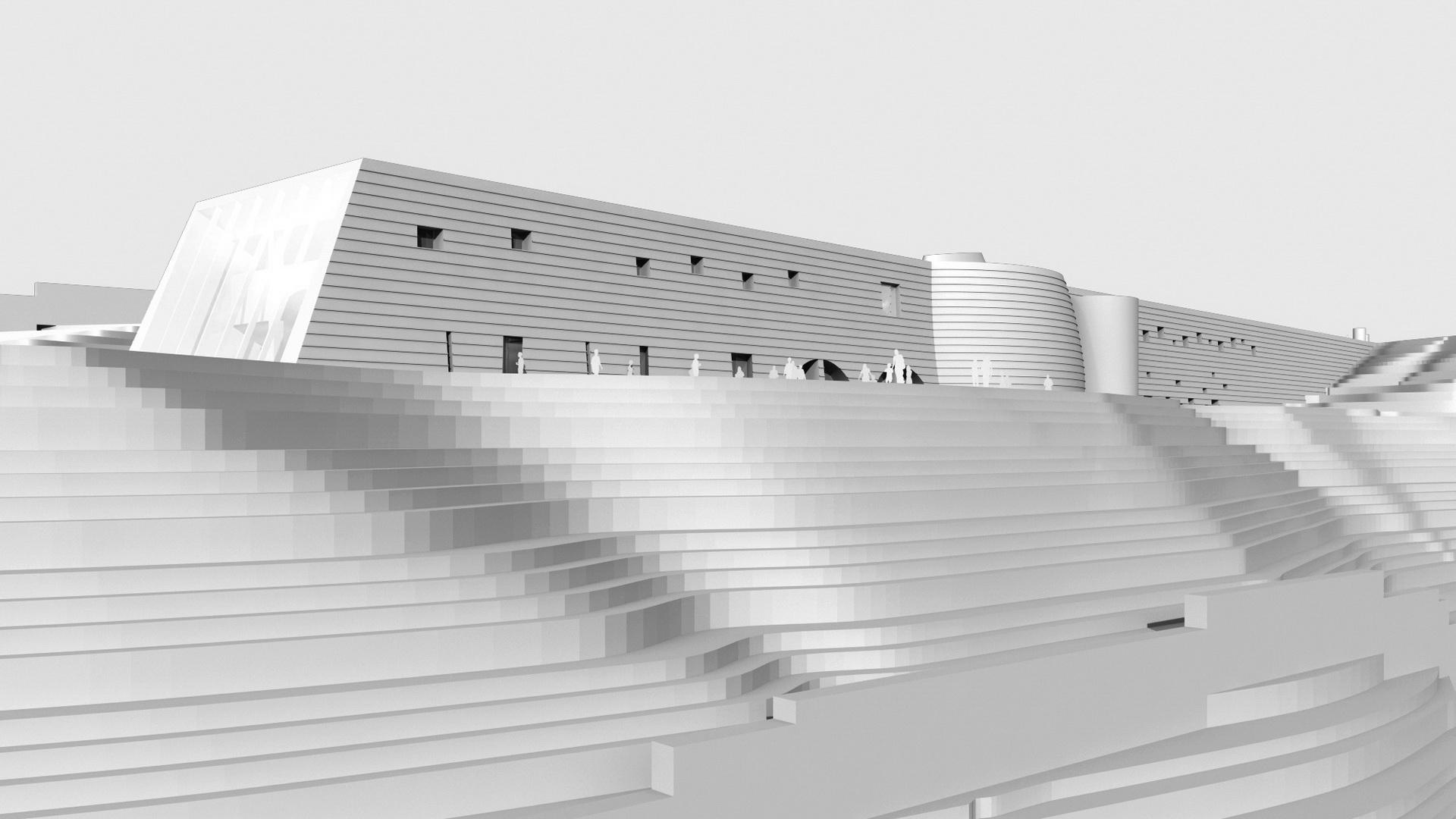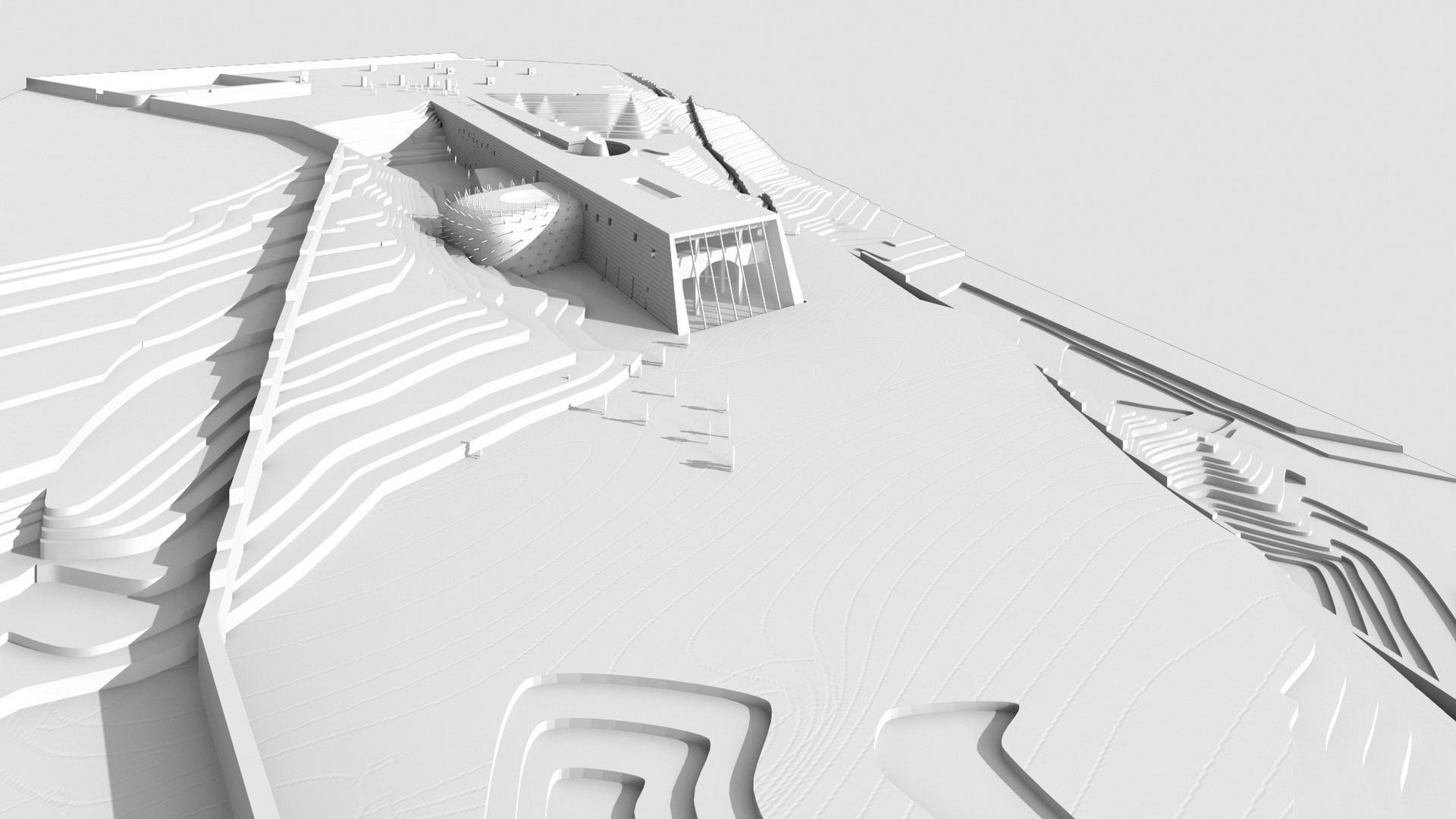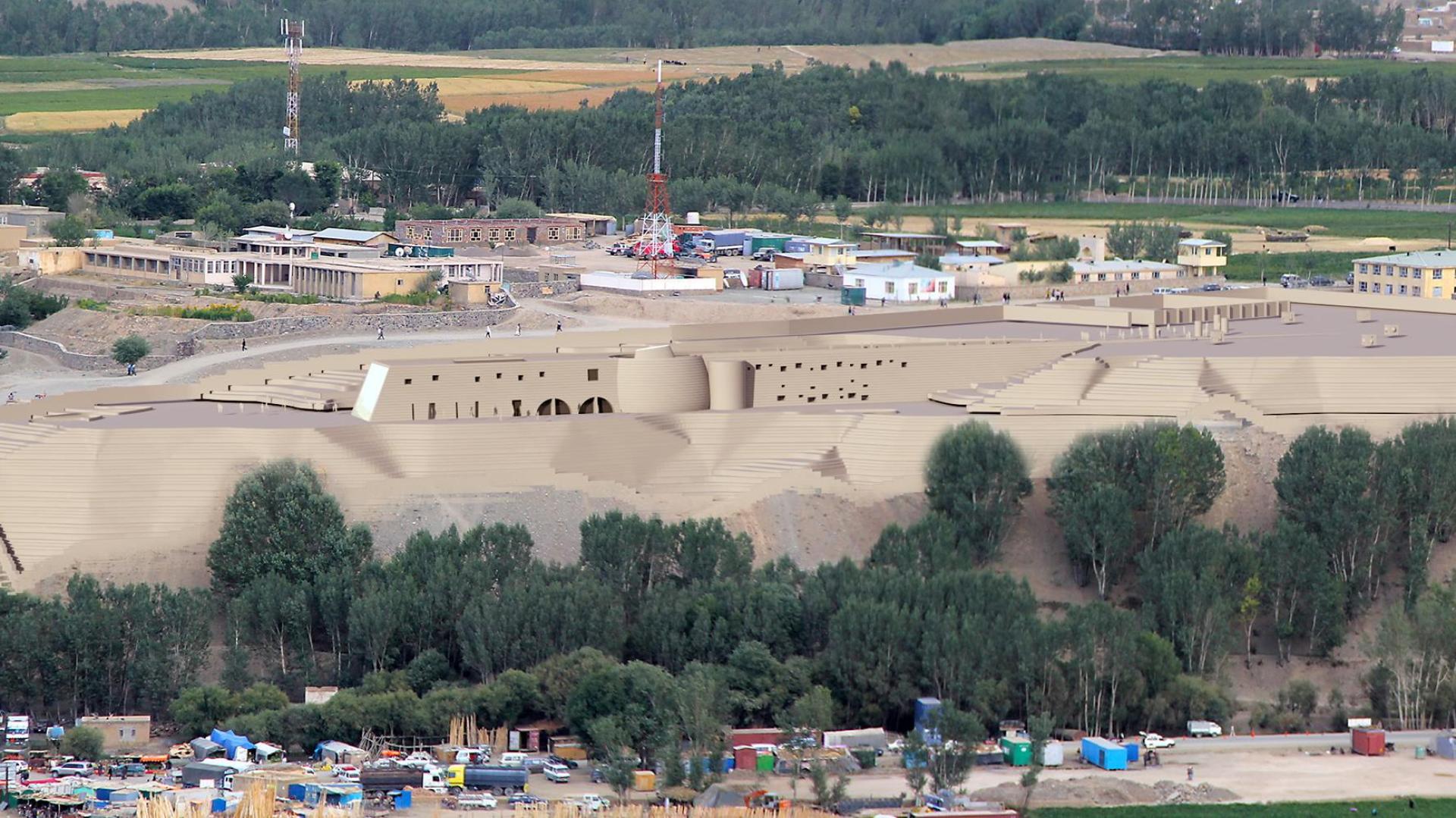BANIYAN CULTURE CENTER
cultural Chawni Hill Afghanistan Ministry of Information and Culture
The BCC lies on the plateau of Chawni Hill, 2500m above sea level, and overlooking expansively the Bamiyan Valley. The building mass uses the existing topography, by only adding one simple element on top of it - the beam. Its geometry clearly defined, can be seen as a inverted cut, representing the history of the particular site. It is designed in a manner that it does not disturb the surroundings, but focusses mainly on the interior. The building sits on the lower level of the cliff, easily accessible from the street level. A longitudinal ramp which starts out flush with the landscape slices into the building and draws the visitor inwards. A spiraling ramp leads the visitor deeper into this manmade mountain to the main functions of the building. By going down you disconnect slowly the connection to the context, and start to concentrate on the content. Once you are in, you change form observer to researcher, by admiring the artifacts in the exhibition spaces. Defined cutouts connect to the outside. Windows and openings are used sparingly by framing particular views and to avoid excess energy input and losses. The inspiration for the design of the BCC comes from many different experiences, including having observed the cave sites, and having read about its destruction. Inspired by different cultures, the building represents in itself not only as a cultural center, but also as a memorial , to create a physical impact on history and to foster a new positive relationship between past and present. The basic tendencies of the building are postulated by "Digging – Piling up – Forming" The dialectic between these two processes of design and their blending into a further dimension of a sculptural object, not only seen as a structure also seen as social point of departure. The building is being accessed from the east, via the car park or the almost hidden door. Necessary spaces for guards can be located at the thick double wall. A sculpture garden of carefully positioned monuments creates a series of pause areas which encourages mediation which in return provides the opportunity for the visitor to marvel at the surrounding landscape.Landscape and current site conditions influenced the design of the building very much. The honesty of material and surface texture relate back to the landscape providing a self-maintaining envelope that respects its context. The building is not transforming the site. We keep the existing surrounding as much as possible, to show a certain grown hardness, also in the sense of representing a honest connection to the earth. We envision a simple construction whereby the local materials and workforce is utilized drawing from traditional knowledge with modern day solutions. The whole structure is made out from clay and it is foreseen that the majority of energy for the building’s needs will be generated on site through the means of for e.g.: solar collector panels. The room program has been taken dealt with and accomplished as stipulated in the competition brief.
